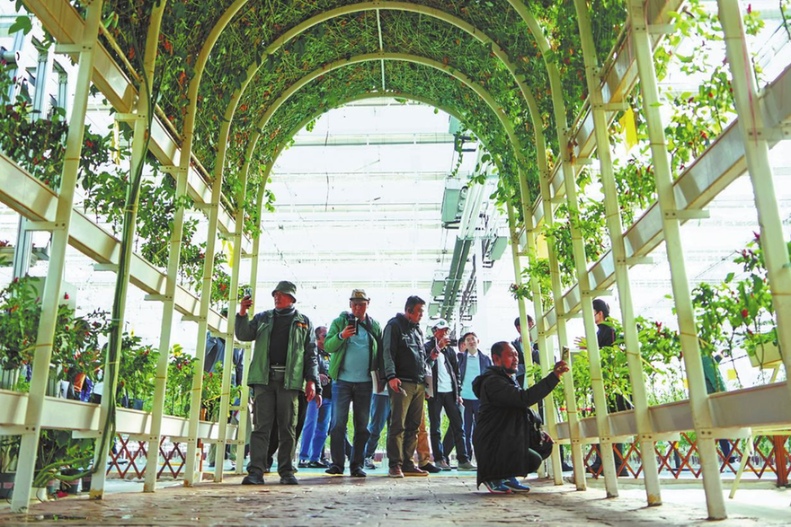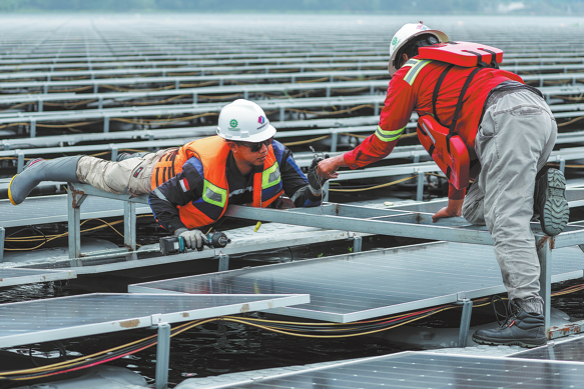Fed rate hike to raise pressure on borrowers

The US Federal Reserve's latest rate hike will put more pressure on borrowers, such as those looking to buy a new car or use credit cards.
The central bank raised interest rates by a quarter-percentage point on Wednesday, citing still elevated inflation.
The increase, the Fed's 11th in its last 12 meetings, put the benchmark overnight interest rate in the 5.25-5.50 percent range, a level last seen just prior to the 2007 housing market crash and one that has not been consistently exceeded for about 22 years.
The steady rush of Fed hikes started in March 2022, when rates were hovering around zero.
"The pain that the rate hike has caused for a lot of people isn't gratuitous," Columbia Business School economics professor Brett House told CNBC. "Ultimately, this is a trade off in choices between pain now and greater pain later if inflation isn't brought under control."
A study by the New York Federal Reserve found that 14 percent of applicants for auto loans were rejected over the past year — the highest proportion since the New York Fed began tracking the figure in 2013 — up from 9 percent in February.
"The double whammy of relentlessly high vehicle pricing and daunting borrowing costs is presenting significant challenges for shoppers in today's car market," said Ivan Drury, director of insights at auto-information site Edmunds, to CNBC.
The average price paid for a new vehicle last month was nearly $48,000 — about 25 percent above the pre-pandemic average, and the average used car now costs nearly $30,000 — 45 percent above what it was before the pandemic.
Even people with good credit are being rejected for auto loans, as rising vehicle costs and higher loan rates — from 4.5 percent on average in March 2022 to 7.2 percent in June — has made monthly payments onerous.
"I think people are just not able to qualify for the payments," says Jessica Caldwell, executive director of insights for Edmunds.com.
In that same June 2022-June 2023 period, applicant rejections for credit cards, mortgages, mortgage refinancings and higher credit card limits all rose, too, according to the New York Fed.
Overall, the rejection rate for credit applicants reached 21.8 percent, the highest level since June 2018.
Credit card interest rates also are at or near all-time peaks.
The average annual percentage rate (APR) on a credit card that charges interest is 22.16 percent, according to the latest data from the Fed. The average APR on a new credit card offer is 24.24 percent, the highest rate since LendingTree began tracking it in 2019.
Americans now have a record amount of nearly $988 billion in credit card debt, according to Federal Reserve data released in June.
Mortgage rates have more than doubled in two years. The average rate on a 30-year mortgage was 6.78 percent in the week ending July 20; although down from 6.96 percent the week before, according to Freddie Mac, it is still well above the 5.54 percent a year ago.
And while inflation data since the Fed's June 13-14 meeting has been weaker than expected (the consumer price index was up 3 percent in June compared with 9.1 percent a year ago), policymakers have been reluctant to alter their hawkish stance until there is more progress in reducing price pressures.
"Tighter credit conditions for households and businesses are likely to weigh on economic activity, hiring, and inflation. The extent of these effects remains uncertain. The Committee remains highly attentive to inflation risks," the rate-setting Federal Open Market Committee (FOMC) said in its policy statement.
In a news conference after the release of the FOMC statement, Fed Chair Jerome Powell said, "It is certainly possible that we would raise the (federal) funds rate again at the September meeting if the data warranted, and I would also say it's possible that we would choose to hold steady at that meeting."
But Powell cautioned against expecting any near-term cuts in rates. "We'll be comfortable cutting rates when we're comfortable cutting rates, and that won't be this year," he said.
Key measures of inflation remain above the Fed's target rate of 2 percent. The central bank's preferred inflation gauge, the personal consumption expenditures index, was up 3.8 percent in the May, the latest data available.
The economy, which features a low 3.6 percent unemployment rate, continues to outperform expectations given the rapid increase in interest rates.
Job gains remain "robust", the Fed said, while it described the economy as growing at a "moderate" pace, a slight upgrade from the "modest" pace seen as of the June meeting.
The US government is expected to report Thursday that the economy grew at a 1.8 percent annual pace in the second quarter, according to economists polled by Reuters.
Powell said he's still hopeful that the economy can achieve a "soft landing", a situation in which inflation falls, unemployment remains relatively low, and a recession is avoided.
"My base case is we'll be able to achieve inflation moving back down to our target without the kind of really significant downturn that results in high levels of job losses," the Fed chair said, while noting that the outlook is "a long way from assured".
In the most recent economic projections from Fed policymakers, 12 of 18 officials expected at least one more quarter-percentage-point increase would be needed by the end of this year.
Agencies contributed to this story.
































